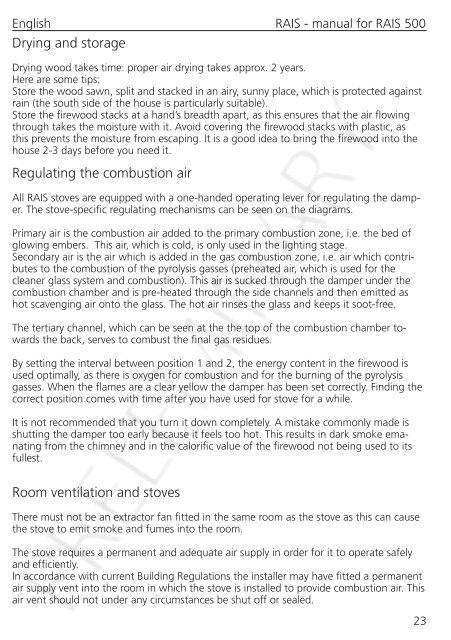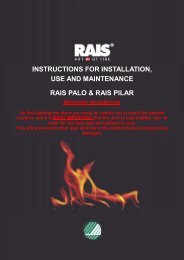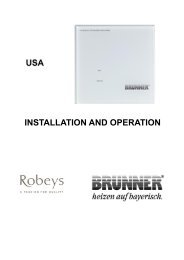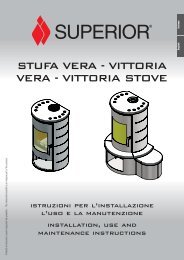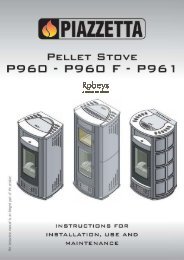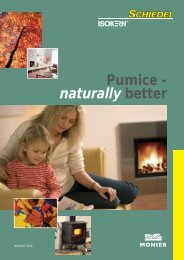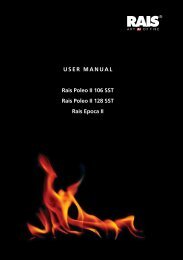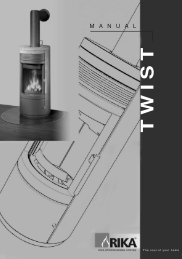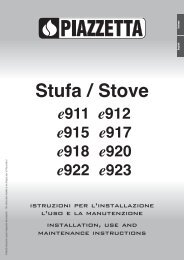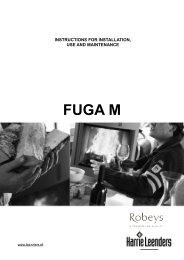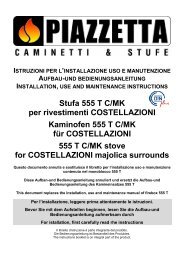USER MANUAL RAIS 500 - Robeys Ltd
USER MANUAL RAIS 500 - Robeys Ltd
USER MANUAL RAIS 500 - Robeys Ltd
Create successful ePaper yourself
Turn your PDF publications into a flip-book with our unique Google optimized e-Paper software.
English <strong>RAIS</strong> - manual for <strong>RAIS</strong> <strong>500</strong><br />
Drying and storage<br />
Drying wood takes time: proper air drying takes approx. 2 years.<br />
Here are some tips:<br />
Store the wood sawn, split and stacked in an airy, sunny place, which is protected against<br />
rain (the south side of the house is particularly suitable).<br />
Store the firewood stacks at a hand’s breadth apart, as this ensures that the air flowing<br />
through takes the moisture with it. Avoid covering the firewood stacks with plastic, as<br />
this prevents the moisture from escaping. It is a good idea to bring the firewood into the<br />
house 2-3 days before you need it.<br />
Regulating the combustion air<br />
All <strong>RAIS</strong> stoves are equipped with a one-handed operating lever for regulating the damper.<br />
The stove-specific regulating mechanisms can be seen on the diagrams.<br />
Primary air is the combustion air added to the primary combustion zone, i.e. the bed of<br />
glowing embers. This air, which is cold, is only used in the lighting stage.<br />
Secondary air is the air which is added in the gas combustion zone, i.e. air which contributes<br />
to the combustion of the pyrolysis gasses (preheated air, which is used for the<br />
cleaner glass system and combustion). This air is sucked through the damper under the<br />
combustion chamber and is pre-heated through the side channels and then emitted as<br />
hot scavenging air onto the glass. The hot air rinses the glass and keeps it soot-free.<br />
The tertiary channel, which can be seen at the the top of the combustion chamber towards<br />
the back, serves to combust the final gas residues.<br />
By setting the interval between position 1 and 2, the energy content in the firewood is<br />
used optimally, as there is oxygen for combustion and for the burning of the pyrolysis<br />
gasses. When the flames are a clear yellow the damper has been set correctly. Finding the<br />
correct position comes with time after you have used for stove for a while.<br />
It is not recommended that you turn it down completely. A mistake commonly made is<br />
shutting the damper too early because it feels too hot. This results in dark smoke emanating<br />
from the chimney and in the calorific value of the firewood not being used to its<br />
fullest.<br />
Room ventilation and stoves<br />
There must not be an extractor fan fitted in the same room as the stove as this can cause<br />
the stove to emit smoke and fumes into the room.<br />
The stove requires a permanent and adequate air supply in order for it to operate safely<br />
and efficiently.<br />
In accordance with current Building Regulations the installer may have fitted a permanent<br />
air supply vent into the room in which the stove is installed to provide combustion air. This<br />
air vent should not under any circumstances be shut off or sealed.<br />
PRELEMINARY<br />
23


